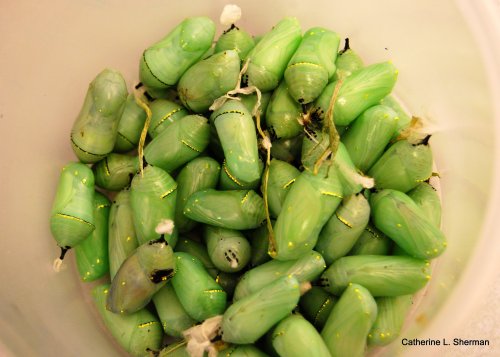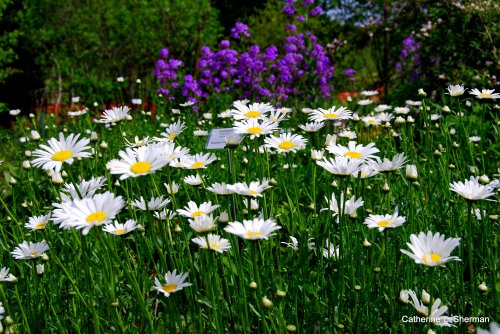A Galapagos Giant Tortoise retreats into his shell as tourists in another group gather in the highlands of Santa Cruz Island in the Galapagos Islands to learn more about this magnificent creature.
I visited the islands with my family in April 2015, and we toured the highlands was our first day. It was truly thrilling to see these giant tortoises in their natural environment. I remember seeing one in a zoo when I was a child. Children even rode them (I think I even did), which is a bad idea, and of course no longer allowed. They aren’t afraid of humans, but do make a chuffing noise if you startle them.

The nasty little fire ant has invaded the Galapagos Islands. Here’s a fire ant hill in the highlands of Santa Cruz Island of the Galapagos. The ants found me before I found them, unfortunately. There are efforts in the Galapagos to rid the islands of invasive species, which have caused great damage to the native animals and plants.
The tourists in the pictured group are wisely wearing rubber boots. Our guide offered us boots, too, but I was happy wearing my comfortable “sporty” flip flops, relieved to let my feet breathe after a long trip. Bad idea. I successfully evaded puddles and tortoise poop, but I stepped right onto an ant hill teeming with fire ants, an invasive species in the Galapagos. This was within two hours of my arrival on the island of Santa Cruz. I got about six painful, itchy stings on my toes. I’m no stranger to fire ants, so I know enough to wear closed shoes in grassy areas in Texas, but I wasn’t prepared for the little devils in the Galapagos.
Galapagos is an old Spanish word for tortoise. The signs at this ranch warn visitors not to feed or touch the “galapagos.” The tortoises are now more commonly known as “tortuga” in Spanish. (At the bottom of this post is a link explaining how the islands were named.) The Galapagos Island archipelago has been described as one of most scientifically important and biologically outstanding areas on earth, according to UNESCO in 2001. My week there was amazing, wonderful and incredible, despite fire ants (and various other mishaps.)

This Giant Galapagos Tortoise paused to give us a questioning look as he crossed the road in front of our car in the highlands of Santa Cruz Island in the Galapagos Islands. He is king in this place! (Or perhaps she is queen!)
How the Galapagos Islands Were Named.
The Difference Between Turtles, Tortoises and Terrapins.
GIANT TORTOISE FACTS: The Galapagos tortoise or Galapagos giant tortoise (Chelonoidis nigra) is the largest living species of tortoise and the 14th-heaviest living reptile. Modern giant tortoises can weigh up to 5oo pounds (250 kg); even larger versions, now extinct, roamed every continent except Antarctica and Australia. Today, they exist only the Galapagos Islands, and Aldabra in the Indian Ocean. The tortoise is native to seven of the Galapagos Islands, a volcanic archipelago about 620 miles (more than 1,000 kilometers) west of the Ecuadorian mainland. With life spans in the wild of over 100 years, it is one of the longest-lived vertebrates. One of the most famous was “Lonesome George,” who died in 2012, the last Pinta Island Tortoise.
Shell size and shape vary between populations. On islands with humid highlands, the tortoises are larger, with domed shells and short necks – on islands with dry lowlands, the tortoises are smaller, with “saddleback” shells and long necks. Charles Darwin’s observations of these differences on the second voyage of the Beagle in 1835, contributed to the development of his theory of evolution. Tortoise numbers declined from over 250,000 in the 16th century to a low of around 3,000 in the 1970s. This decline was caused by exploitation of the species for meat and oil, habitat clearance for agriculture, and introduction of non-native animals to the islands, such as rats, goats, and pigs. Conservation efforts, beginning in the 20th century, have resulted in thousands of captive-bred juveniles being released onto their ancestral home islands, and it is estimated that the total number of the species exceeded 19,000 at the start of the 21st century. Despite this rebound, the species as a whole is classified as “vulnerable” by the International Union for Conservation of Nature (IUCN).















































